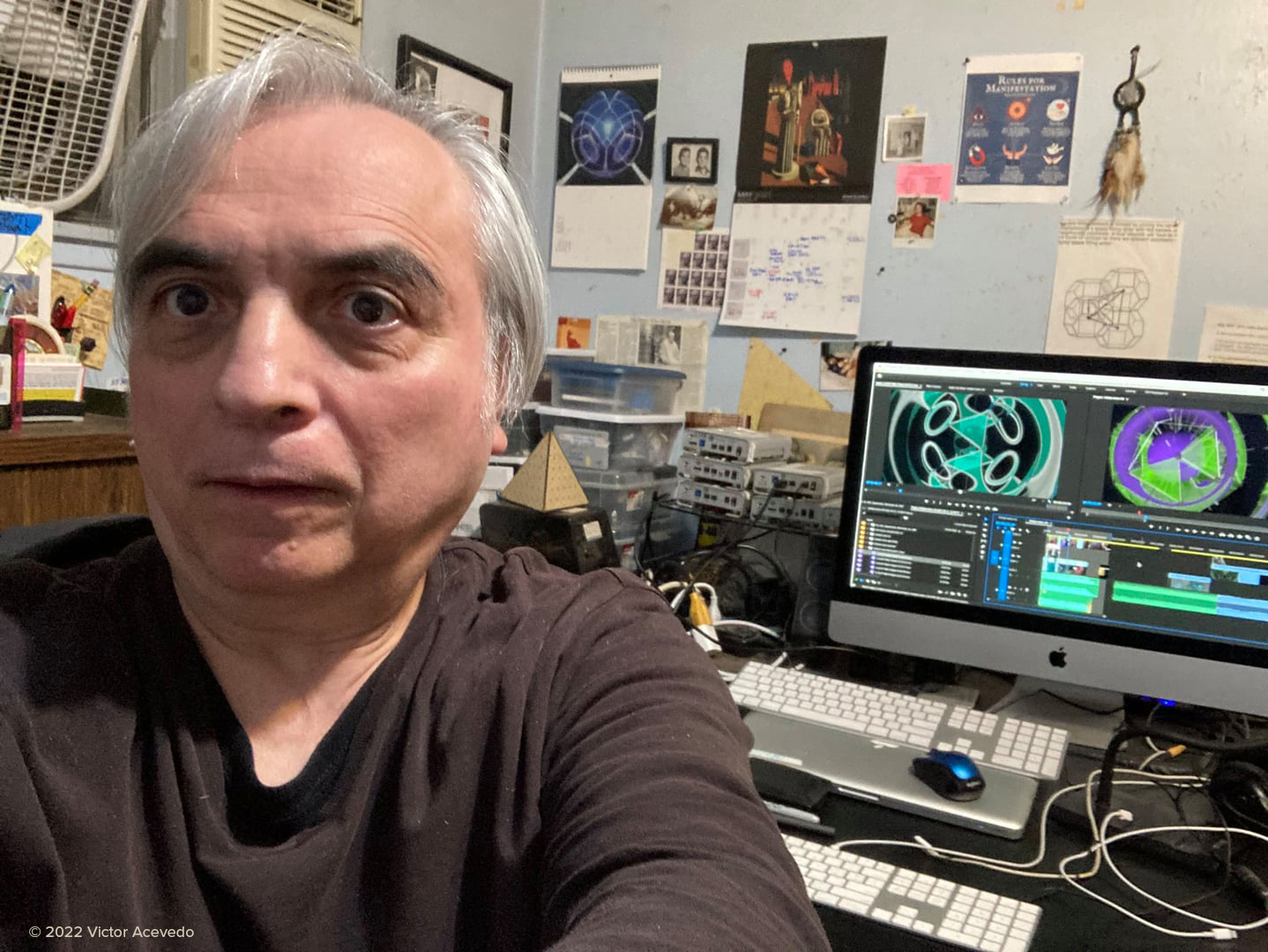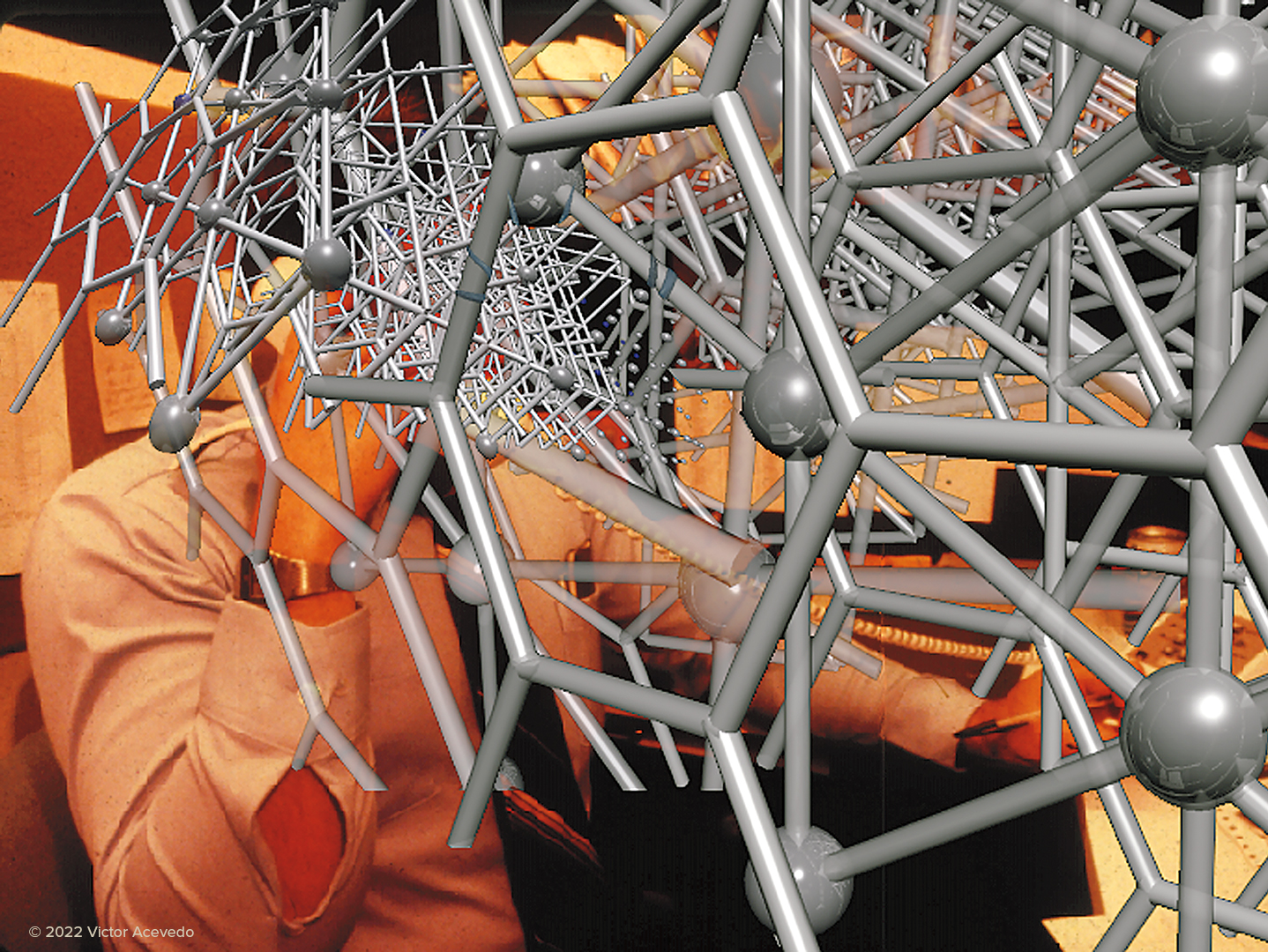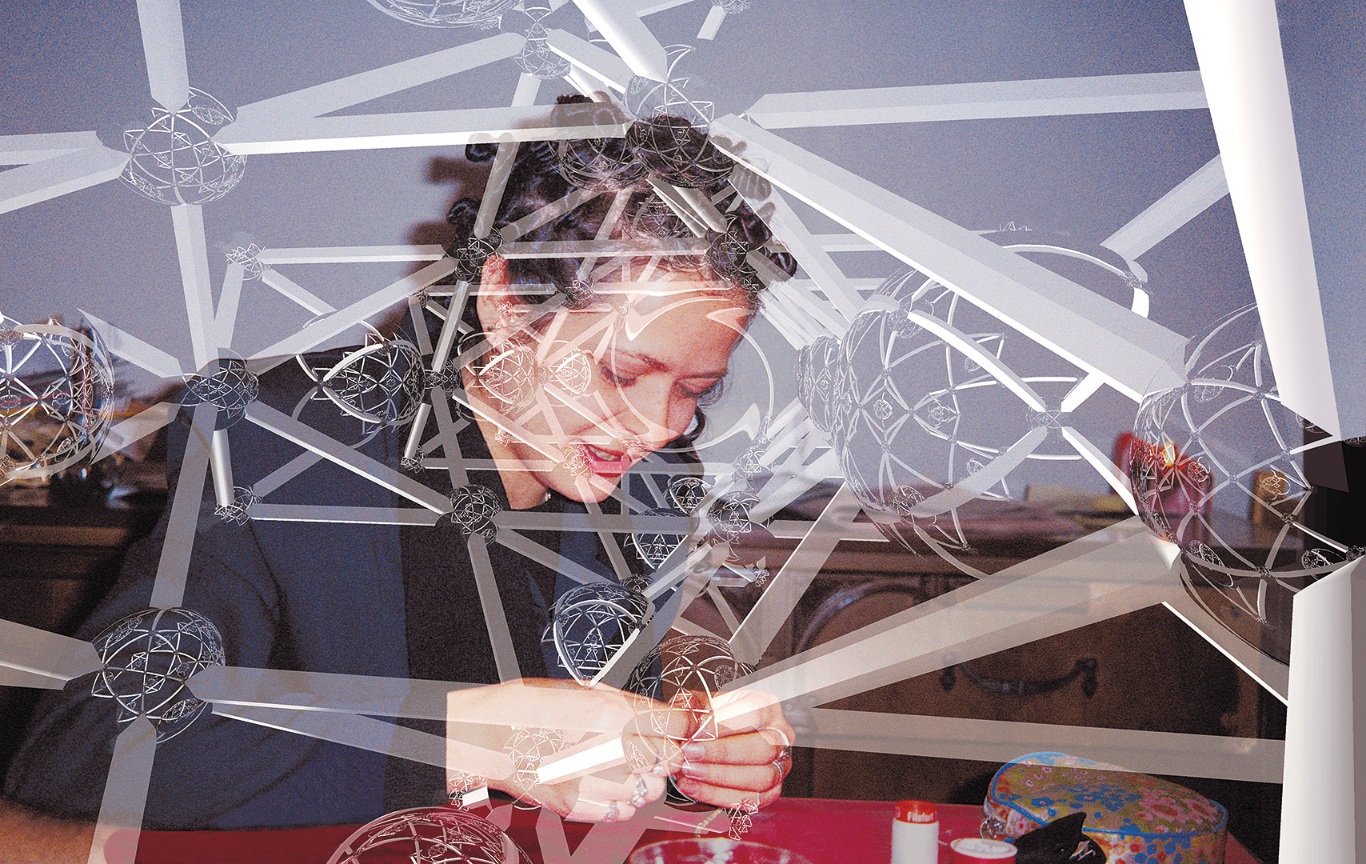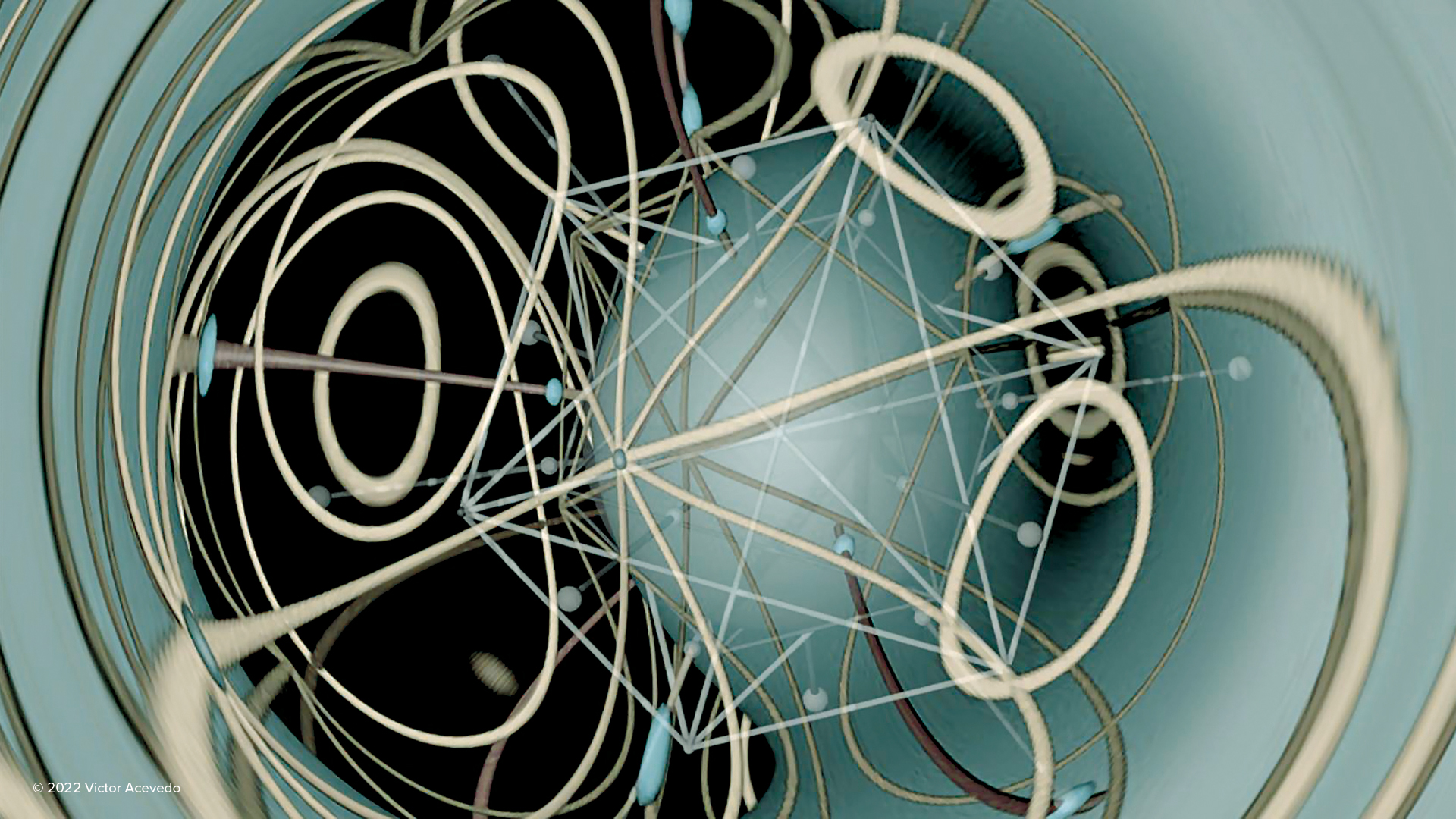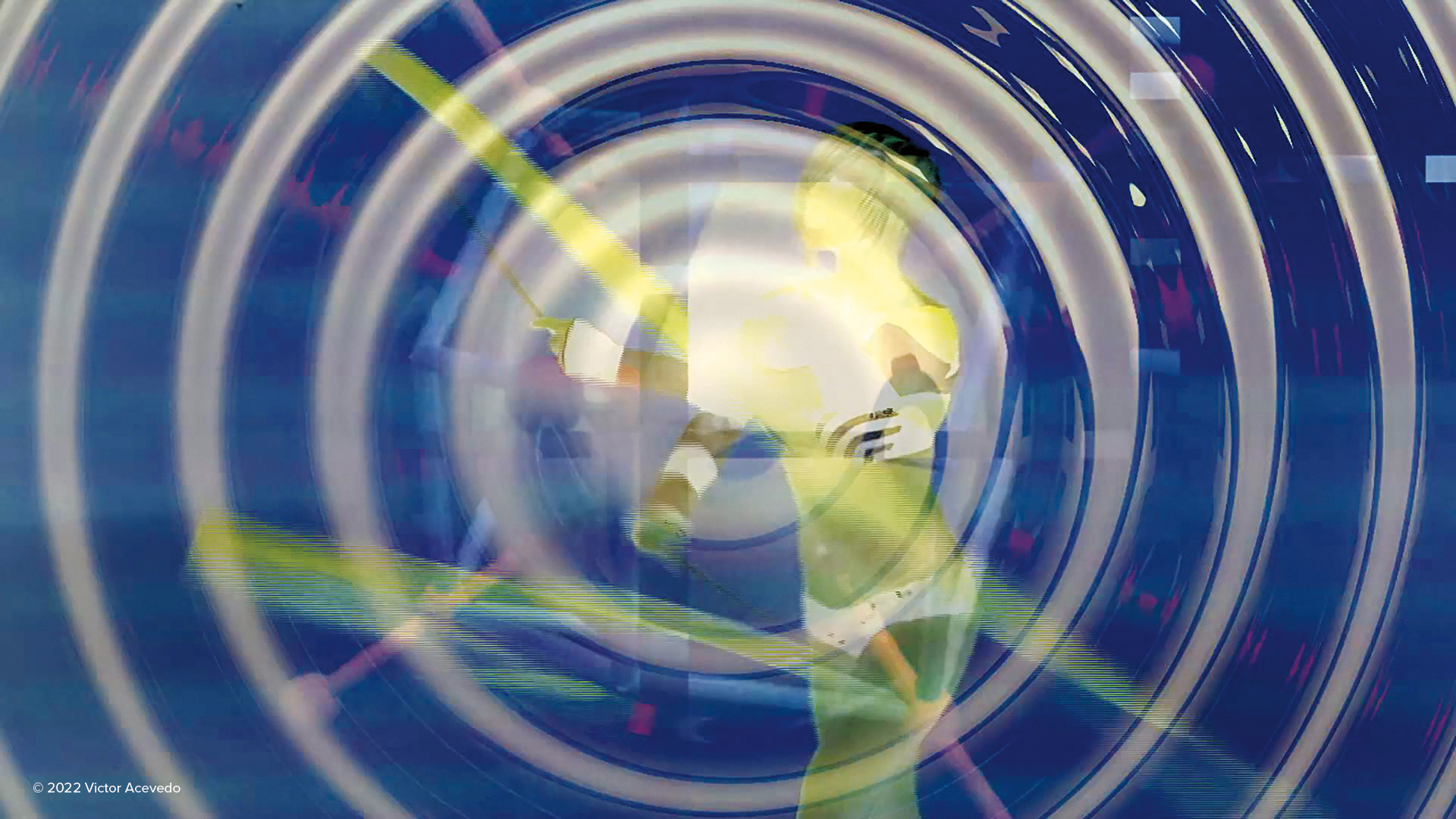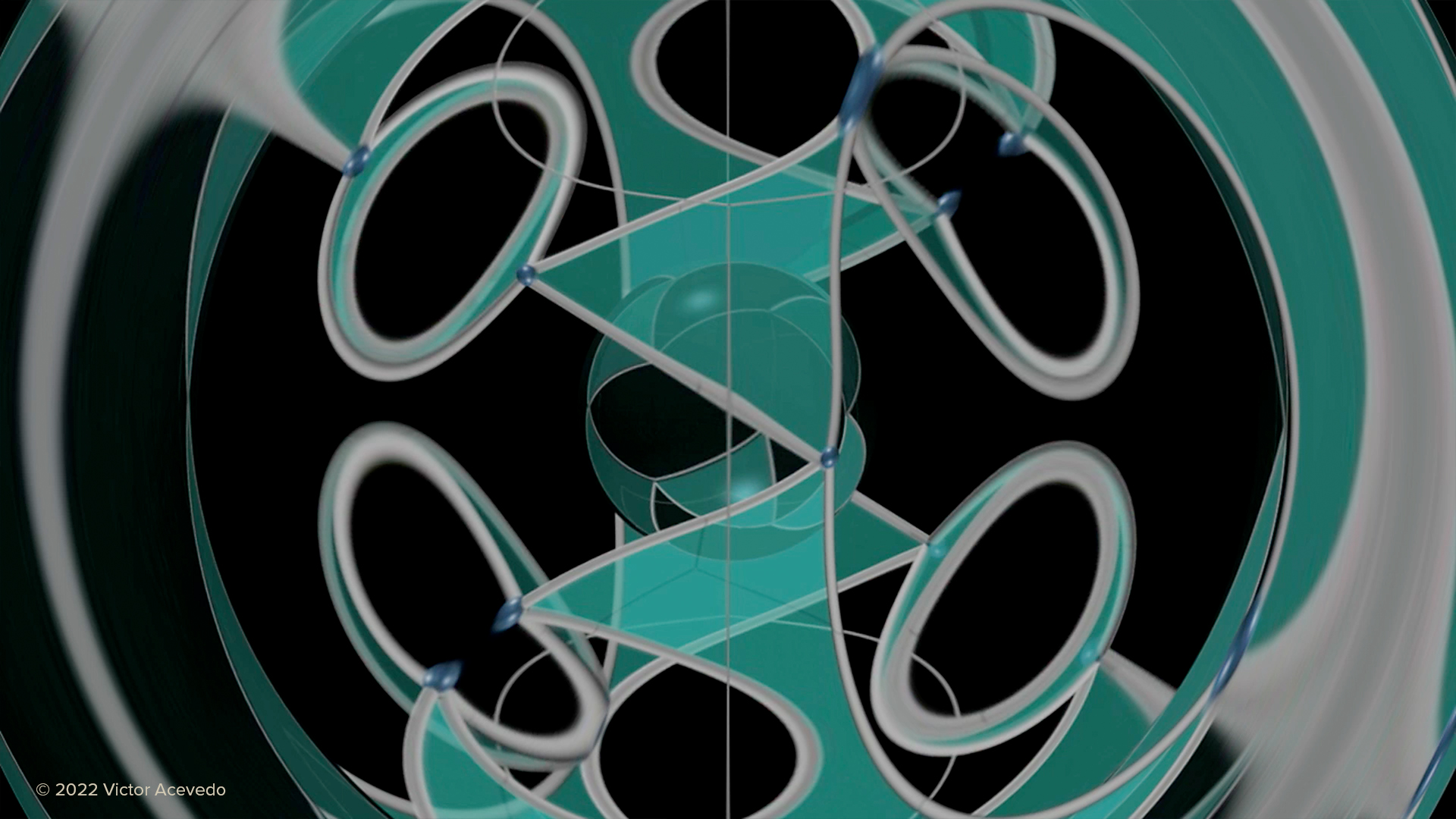12 JUNE 2022 /
THE ART OF VICTOR ACEVEDO /
Victor Acevedo was born and raised in Los Angeles, California. He is an artist best known for his digital print and video work. His current focus is producing electronic visual music works. Acevedo’s imagery has a surreal and metaphysical feel, expressed through geometrical abstraction, sometimes with figuration.
His videos, although narrative in the abstract, explore the perceptual implications of synesthesia by way of the graphical dynamics of animated polyhedral structures.
He is considered a desktop computer art pioneer because he was an early adopter of the personal computer to create fine art in the early 1980s. He has shown his work in over 135 group and solo art exhibitions in the U.S. and internationally since 1982.
During the 2020 COVID-19 Pandemic lockdowns in Los Angeles, Acevedo took the time to complete the production of a book that is a 43 year career survey that features examples of his work across a span of years 1977 through 2020. It is entitled “Acevedo in Context”, and it will be available in pre-release in late 2022.
In 2021 he began to make some of his work available in the burgeoning crypto-currency NFT art space. Although it’s still early days, Acevedo sees it as a significant game-changer for digital art in the art marketplace. You can find several collections of his work on OpenSea. However, for more traditional collectors, you can still acquire physical Acevedo prints directly from his studio.
He has participated in several NFT exhibitions produced by Searchlight.Art and partners, in real life (IRL) and in various metaverse gallery spaces. Metaverses are Web 3.0 interfaces or environments; essentially virtual reality spaces that can be accessed interactively on one’s computer desktop.
2021 was also the year that the new art-historical term Techspressionism began gaining traction and a wider international acceptance. It has been defined by its inventor Colin Goldberg as “an artistic approach in which technology is utilized as a means to express emotional experience.” Acevedo’s work fits well within its definition and as a result, he was included in several key Techspressionist IRL and metaverse exhibitions in 2021 and 2022, including Techspressionism: Digital & Beyond at the Southampton Art Center, April 23-July 23, 2022. http://techspressionism.com/
You can find out more about Victor Acevedo’s work at his website, https://www.acevedomedia.com/
A Chronology Victor Acevedo’s Digital Art
Acevedo’s early influences were Cézanne, Picasso, M.C. Escher, Salvador Dali, Fritjof Capra and R. Buckminster Fuller. A deep study of their work and ideas, led him to develop his own style and graphical metaphor. It is a kind of ‘geometrical surrealism’ and it is quite evident in his early traditional media work, which usually juxtaposes figuration with periodic non-objective form. This interplay of geometry and contemporary surrealism carries over into both his digital print and video work.
Acevedo’s first important digital prints were presented as the Ectoplasmic Kitchen series produced in 1987 and exhibited for the first time in an art gallery the following year. From 1985-90 he worked off and on with the PC-based Cubicomp 3D modeling and animation system. The images called Tell Me the Truth and 6.26.27.86 are key examples of his work from the later part of this period.
In 1994 Acevedo adopted the use of Softimage 3D and began his distinct “silver geometry period” producing such works as Skull and Suit on the Phone as well as his underground collaborations with Andy Warhol, associate Billy Name Linich in 1997.
In early 1995 Victor moved to New York City and became a digital artist in residence in the BFA Computer Art Department at the School of Visual Arts. He joined the faculty there in 1997 and moved to the masters (MFA) program three years later. In 1996 he created one of his most well- known images called The Lacemaker, which he named after the same-titled painting by Johannes Vermeer (1665). Also in this same year, Acevedo produced a couple of time-based video pieces that were essentially looped animated CGI polyhedral structures. Victor has said of this period, “I simply wanted to see what those animated polyhedra would look like and what other residual perceptual effects would emerge from watching those geometrical forms in repeating motion.”
Following the natural evolution of his work, in 2007-09 Acevedo shifted his primary attention to producing visual music works. Exploring the implications of synesthesia and cymatics as well as the use of computer animated geometry, his recent work investigates the intersection of electronic music and audio synthesis as in drone works or glitch, harmonic noise, if you will, and dynamic geometrical structure.
Later he began integrating real-time video mixing work-flows into his audio-visual (AV) studio practice. Acevedo initially positioned himself inside the genre called Visual Music. He later coined the term Electronic Visual Music in 2013, which he thought more accurately described his work in the digital domain.
“My recent videos are informed and influenced by electronic music and abstract jazz-based forms as well as R. Buckminster Fuller’s Synergetics and ‘classical’ sacred geometry. I also owe a conceptual debt to the “moving painting” video work of Bill Viola as well as the pioneering practitioners of Visual Music, for example, Jordan Belson, Oskar Fischinger, and John & James Whitney Sr.
I think of my videos as existing in the lexicon nexus between experimental film and visual music. At the heart of my motion-graphics practice is a core sensibility of being a painter. I think you can see that in the dynamic layering of graphical textures to be found in the work.
The look and sensibility of my work derive from an ongoing commitment to practice visual perception filtered or sensed through a reference to polyhedral structure. The real-time apprehension of the topological coordinates of interconnected densities in the field [of view] facilitates an expressive rendering of the natural energetic resonance present even in the most prosaic of scenes.
My goal is to provide visual artifacts such that a viewer, end-user, or participant may augment the conceptions and perceptions they bring with them,” said the renowned artist Victor Acevedo about his recent video work.
In 1999 Acevedo’s digital image The Lacemaker was featured in the ACM/SIGGRAPH produced video documentary called The Story of Computer Graphics and later (2007) his work was cited in ACM/SIGGRAPH’s digital art history archive initiative.
In 2002 Acevedo’s essay, Space Time with M.C. Escher and R. Buckminster Fuller was published in the book Escher’s Legacy: A Centennial Celebration, edited by Doris Schattschneider and Michelle Emmer (Springer-Verlag, 2002).
In 2005, the aforementioned Tell Me the Truth, one of Acevedo’s early 1990s digital art prints, was acquired by the Victoria & Albert Museum in London, as part of their acquisition of the Patric Prince Computer Art Collection. Scholars agree that it is one of the most important collections of Digital fine art in the world today.
In 2006 through 2013, Acevedo’s work was featured in several art history books. The first of which was called Art of the Digital Age, edited by Bruce Wands (Thames and Hudson 2006) The piece reproduced in the book is called Eric in Orense (2000) and it was also featured in the book’s online and hard-copy promotional announcements. The book is described as “The first major illustrated survey of this exciting, new, and experimental field”.
Acevedo’s work was discussed at length in an important and influential book called From Technological to Virtual Art, written by art historian Frank Popper, (MIT Press 2007).
His image called Springside Cynthesis and a descriptive blurb about his work was included in Wolf Lieser’s Digital Art (Ullmann/Tandem, 2009) and also in the large format ‘coffee table’ edition of this book, retitled The World of Digital Art (h.f. Ullman, 2010)
Acevedo’s image 4D Memory Cluster was reproduced in the book Moving Innovation: A History of Computer Animation (Tom Sito, MIT Press, 2013)
Victor Acevedo founded his company ACEVEDOMEDIA in 2010 to produce Music Videos and Electronic Visual Music works, as well as Educational & Documentary projects. Future plans include Dome projections and VR/AR.
Note: This article was compiled from material excerpted from Acevedo’s forthcoming book, Acevedo in Context.
List of illustrations © 2022 Victor Acevedo All rights reserved.
1. Victor_Acevedo_in_his_studio_2021
2. Ectoplasmic_Kitchen_Zo_1987
3. Tell Me the Truth_HD_1990
4. Suit on the Phone_1994
5. The Lacemaker_1996
6. Recordings_v02_self portrait_2017
7. Life_Form_v03_2017
8. Proxima_Nova_s09_2019
9. Proxima Nova_s01_2019
10.Red_Shadow_VE_outake_2020
11. Orbic Field_s09_2021
12. Otherness Entity_2021
Images Credit / Victor Acevedo

